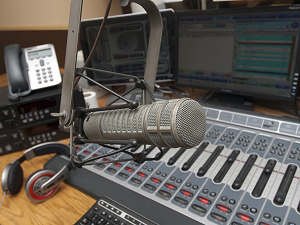Causes And Risk Factors Of Alcoholism
Content
Such patients would benefit from treatment
by a pain specialist (3). 1Adoption studies compare the
risk of alcoholism in biological relatives with the risk in adoptive relatives
of alcoholics (e.g., an adopted-away child of an alcoholic parent). Psychosocial or behavioural interventions that reduce the risk of alcohol dependence during adolescence could contribute to preventing depression in young adulthood. Cultures where drinking is considered shameful may cause alcoholics to hide their condition and avoid treatment due to the stigma of being labeled an alcoholic. The graphic below is a visual interpretation of the findings from her research.
Intermediate familial alcoholics drink on an average of 172 days a year, consuming five or more drinks on 54% of those days with a maximum of 10 drinks. Functional alcoholics make up 19.4% of alcohol-dependent individuals. They also have a later age https://stylevanity.com/2023/07/top-5-questions-to-ask-yourself-when-choosing-sober-house.html of first drinking (average of 19 years) and a later onset of alcohol dependence at an average of 37 years. They tend to drink alcohol every other day, an average of 181 days per year, and they consume five or more drinks on 54% of those days.
What causes alcohol use disorder?
HICS works with regional partners and stakeholders including health care service providers, human service systems and local community resources to offer a comprehensive and welcoming system of care. In the United States, the Diagnostic and Statistical Manual of Mental Disorders (DSM) is the most common diagnostic guide for substance use disorders, whereas most countries use the International Classification of Diseases (ICD) for diagnostic (and other) purposes. The two manuals use similar but not identical nomenclature to classify alcohol problems. It’s a disease of brain function and requires medical and psychological treatments to control it. Over the long- or medium-term, excessive drinking can significantly alter the levels of these brain chemicals.
- “Recognizing early on that there is a potential problem increases the likelihood of addressing it in a timely basis,” and can curb the potential side effects before they take place, she says.
- Before you know it, you’re heading to every company happy hour, drinking more frequently and even craving alcohol after a long workday – all warning signs of AUD.
- The datasets generated and analysed during the current study are not publicly available due to the data protection regulations but are available from the corresponding author on reasonable request..
- With all alcoholic beverages, drinking while driving, operating an aircraft or heavy machinery increases the risk of an accident; many countries have penalties for drunk driving.
Sam eventually realised he was addicted to alcohol when he tried to give it up. Doctors were unable to identify what was wrong with him – they told him he had a virus and sent him on his way. The experience culminated with him being signed up to a drug and alcohol service, and he did a 10-day detox in an addiction centre. Sam started drinking when he was in his mid 20s after a friend put vodka in his drink as a “joke”. At that time, he had just recovered from bulimia, a condition he had been battling since he was a teenager growing up in Liverpool.
What Is Alcoholism?
This causes the body to crave alcohol in order to feel good and avoid feeling bad. Alcoholism, now known as alcohol use disorder, is a condition in which a person has a desire or physical need to consume alcohol. Get professional help from an addiction and mental health counselor from BetterHelp. Alcohol treatment professionals work with you to create a personalized comprehensive recovery plan with measurable goals.

However, among persons with lifetime dependence, early-onset drinkers were not more likely to experience multiple episodes, but they were more likely to experience episodes of longer duration (Table). Among those who began drinking before age 14 years, 58% experienced an episode lasting more than 1 year compared with 39% of those who waited until they were 21 years or older to begin drinking (Table). Almost 66% of chronic severe alcoholics have sought help for their alcoholism. They have the highest rates of attendance at self-help groups, detoxification programs and specialized rehabilitation programs, and the highest rates of treatment in inpatient programs. When seeking treatment, they tend to turn to social workers, psychologists, psychiatrists and private physicians. About 31% of functional alcoholics have a close family member who also has alcohol dependence.
Understanding the Five Types of Alcoholics
This analysis underscores the importance of systematically exploring and counseling adolescent patients about their drinking practices. Nearly half (46%) of drinkers who developed alcohol dependence began drinking at 16 years or younger, although only one quarter of drinkers started by that age. Other measures of adolescent risk taking not included in the survey could not be assessed as potential confounders.
- European
studies (17–19) have shown that acamprosate not only reduces the risk of
heavy drinking, but nearly doubles the likelihood that patients will achieve abstinence. - If your pattern of drinking results in repeated significant distress and problems functioning in your daily life, you likely have alcohol use disorder.
- The expectations an individual has about drinking also play a big role.



















